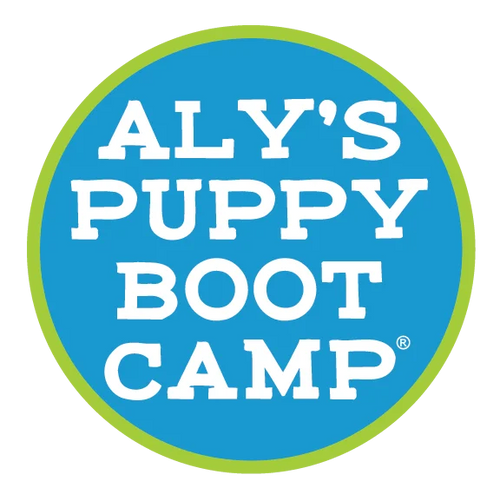Why is my dog so skittish?
If you own a doodle of any kind, it is highly likely that you will experience a moment or period when your dog startles, acts shy, is skittish, or makes a vocal noise.
Yep, it’s going to happen, at one time or another. There are actual fear periods that a dog goes through in the first two years of development. For me, the actual act of startling, act of being shy or act of skittishness or making a vocal noise is no big deal. The act of a dog noticing, reacting to or acknowledging something that happens in their world, does not have a negative or positive value to me. It merely JUST IS, in that moment.
All future moments are not defined by that one moment. For me, what carries much more weight is what happens AFTER the act of startle, shy, or skittishness or vocalization that is the most important piece in this puzzle.
Does the dog go into a huge state of FLIGHT or FIGHT and freak out flipping around at the end of the leash?
Does the dog bolt off?
Does the dog bark and then want to attack the offending object?
Does the dog start hysterically barking and keep at it for extended periods of time?
Does the dog come back to your side after the startle?
Does the dog still accept your leash guidance?
Does the dog keep moving along with you?
Can you shut down the silliness?
Does your dog stop barking after you acknowledge what was going on?
These are mighty differences and these differences can help you, the human, keep perspective AFTER the event and develop strategies for helping your dog learn how to handle new stimuli in a more calm and confident way.
Dogs are strangers in a strange land, called HUMANLAND and they are doing their best to navigate it. There are strange smells, strange sights, strange sounds, strange energy, strange everything.
Some dogs are the life of the party, and others are wall flowers.
Each dog has a unique personality that will affect it’s view on the world.
When a dog has a moment, there is a tendency for people to FREAK out with worry, or fear when their dog startles, acts shy or is skittish or vocalizes. And worse, humans tend to anticipate it in the future; which will never work well with a sensitive dog like a doodle.
A LOUD BOOM, a motorcycle roaring by, too hot, too cold, an approaching human reaching out toward the dog–basically, you dream up all the things that can elicit a reaction of startle, skittishness, shyness or vocalness in your dog.
No matter the reason WHY your dog is acting skittish, shy, startle-y or vocal, there are several things we need to do
1) Understand it from your dog’s perspective; knowing their natural drives that may be in play (prey, pack, defensive) and the state of mind they are in (fight, flight, avoidance or acceptance)
2) What is your dog smelling, hearing or seeing that you may not?
3) Evaluate your response to their response
4) Human must remain Calm, Confident, and Clear to your dog as you begin to deal with that type of exposure again. Desensitization and repetition while being aware of your dog’s state of mind while you do it is essential.
Some tips for you in the most common areas where these issues pop up:
a) Meet n Greets: NEVER allow anyone to touch your dog unless it is invited and wanted. Period. Ask people to quietly extend their hand, PALM UP, and put it down low and invite the dog to them. If the dog comes, quietly scratch them under the chin. If the dog does NOT come to human, then DO NOT TOUCH. PERIOD. Do not allow anyone to violate your dog with affection if it is not wanted in that moment. Just because you want someone to touch your dog does not mean your dog wants it. Respect is a 2-way street.
b) Unexpected Surprises: When the unexpected happens, use Name and Explain to help your dog through that moment, and remember that motion is your friend.If you are not familiar with Name and Explain, Aly goes into great detail in her book The Pillars of Pack Leadership.
It’s perfectly acceptable for you to stop, relax, breathe, re-group and then re-start. Get walking, keep walking, and DO NOT LET YOUR HANDS GET TIGHT on the leash. Either put your hand with the leash in your pocket at a nice walking length OR tether your dog to your waist at a nice walking length and get your hands off the leash.
GO. Breathe. Head up, shoulders back, don’t stare at the dog and GO. Muscle memory takes time and experience to achieve. The human must be able to control their breathing, hands, legs, and leash during any ‘event’.
Here is an example for you: Diana and I were on a walk at a lovely beach town. We were on the sidewalk cruising along when we walked over a storm drain cover and it made a wobble and strange clanging sound. Diana startled and hopped sideways to try and get off the strange sensation below us. WOW, took me by surprise too! (but my hands didn’t jerk up or react in any way, they stayed in the neutral position) No worries.
As I walked past it, onto sturdy sidewalk ground, I stopped. Had Diana sit, and I told Diana, “That was scary. We are going to go up here, turn around and walk over that again. Let’s Go.
We are almost there Diana. We are going over it now…ggggggggggggggggggood (across the span of space of the cover) You did it Diana! You made it over. Good Girl!!!” I popped her a treat. And off we went in another direction.
After relaxing for a bit and tackled it again! After the third cycle we took a break and went on to the beach and had some fun.
c) Vocalness: Acknowledge that the dog has an opinion about something and that it’s a valid expression for them.
Once you’ve achieved some clarity on why they are barking or vocalizing, you can interrupt it with a “Thank you for letting me know. I’ve got this.” or “You are clearly uncomfortable in this situation. Let me help you get more comfortable.” You can get him to refocus on you by getting him moving and working. You can increase the space from your dog and the offending stimuli. You can sometimes use a high value reward as a thank you for focusing on you. Or you can use a Pet Convincer or Squirt Bottle to interrupt incessant barking. Or, you can use a vibration sensation on an electronic collar. And again, sometimes just getting moving in a relaxed way, can settle things down.
No matter the impetus for your dog’s choice, do ask yourself these questions as well:
Are they uncomfortable?
Are they seeing;, smelling or hearing something you are not seeing, smelling or hearing?
Are they bored?
Are they frustrated?
Are they over-stressed?
Are they under-exercised?
Are they hurting somewhere on their body?
These are all factors that can contribute to a dog’s startle, shy, skittish, or vocal reaction at any moment.
Once you’ve ruled out, evaluated and mitigated contributing elements to your dog’s reaction, you can begin all the strategies that help a dog handle new exposures to stimuli in a more calm and accepting way.
There is no one road to Rome, but this we know; relationship, trust, time, maturity, consistent exposures in a calm way over time, structure, boundaries, respect of space, the ability to think and focus on human, purpose-driven exercise and calm, confident and clear handling on the human’s part all help to improve any reaction in your dog.
Our sweet doodles are much like my World Champion, show horse REPEAT PLAN who I’ve owned from the age of 4. He is a World Champion precisely because of his sensitivity and his awareness of the world in which he operates in and his intuitive nature. Truly, Repeat could not walk down a road without a snort at a strange boulder, a startle at a leaf blowing, or at a flapping sign.
Did I tighten up on my reins, or grip him harder with my legs? Did I dread EVERY single thing in the future that may cause a reaction in him? NO! I had to breathe, relax, stay loose, and keep on going, and not think about it again. Repeat always rebounded quickly and on we went. I remember when I had just purchased him and I was leading him back to the barn after our ride, and he started bucking! I kept walking and he merely bucked! I looked back at his trainer, and she yelled, “FORGET ABOUT ITt…JUST KEEP GOING!” I did as she said, and all was well and we just went on and he quit bucking. It is absolutely NOT in Repeat’s DNA to NOT be aware of all those things in his world. Now, some would have missed all his greatness if they judged him merely on the fact that he snorted or startled or bucked. Repeat, A WORLD CHAMPION, that is more well trained than most horses, a true superstar, mega hit of a horse could have been deeply misunderstood and never given a chance to rise to his full potential.
That advice of “FORGET ABOUT IT…JUST KEEP GOING” is what you need to do with your doodle. Our doodles are much like my Repeat Plan. Accept who they are, don’t let it frazzle you, breathe, and keep forging ahead with your superstar.



